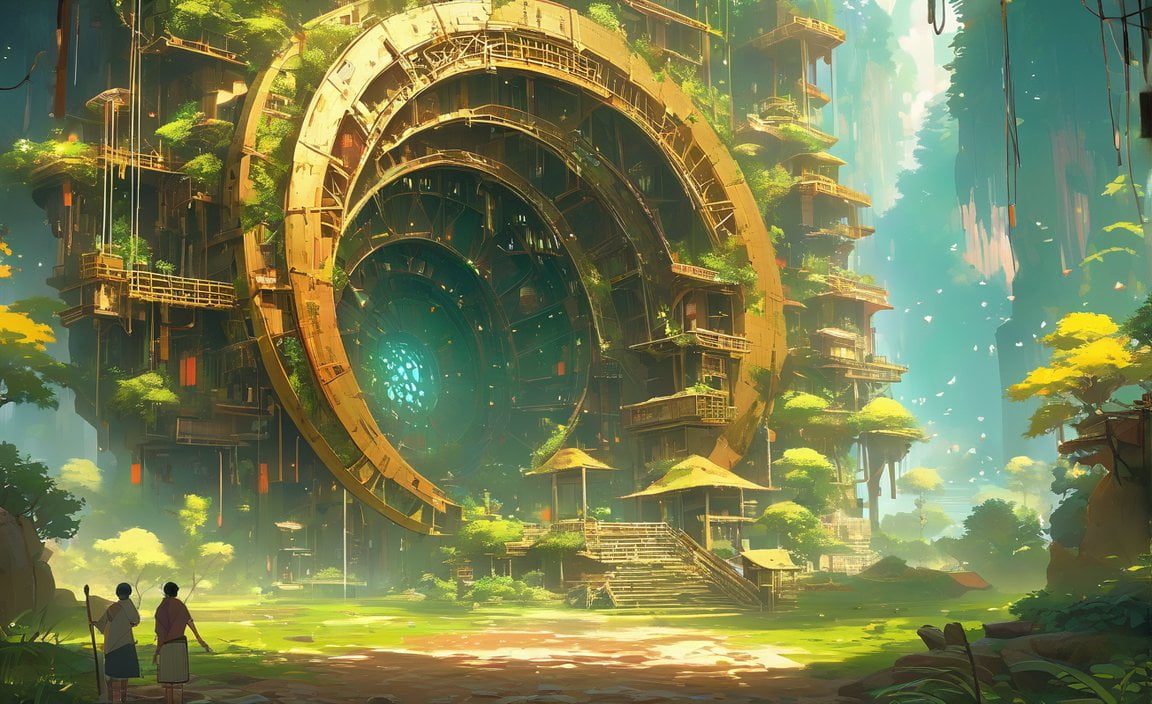In the world of natural resources, there is a distinction between those that are renewable and those that are non-renewable. Renewable resources, such as solar energy and wind power, can be replenished naturally on a human timescale, while non-renewable resources, such as fossil fuels and minerals, cannot.
This article will explore the concept of non-renewable resources, highlighting their characteristics, uses, and environmental impacts. It will also delve into 10 examples of non-renewable resources that play a significant role in our daily lives.
Understanding Non-Renewable Resources: Exploring the Nature of Limited Resources

Non-renewable resources, the lifeblood of modern civilization, have fueled our industries, powered our homes, and propelled our technological advancements. These invaluable resources, however, come with a crucial caveat – their finite nature. Over time, our relentless consumption has propelled us towards the depletion of these precious commodities, raising concerns about our future energy security and environmental sustainability.
The Essence of Finiteness:
Non-renewable resources, unlike their renewable counterparts, are formed over an exceptionally long period, often spanning millions of years. Their formation involves a complex interplay of geological processes, involving the burial of organic matter under immense heat and pressure within the Earth’s crust. This protracted process ensures that the rate of resource formation is far slower than the rate of human consumption.
The Double Bind of Accessibility:
Even when new deposits of non-renewable resources do emerge, their accessibility often presents a formidable challenge. These deposits may lie buried in deep geological formations, requiring sophisticated extraction techniques that are energy-intensive and environmentally impactful. Moreover, the sheer remoteness of these locations can further escalate the cost of extraction, making their economic viability increasingly precarious.
The Looming Challenge:
The finite nature of non-renewable resources, coupled with the complexities of their extraction, paints a sobering picture of our energy future. As we continue to deplete these precious resources, the burden of finding alternatives and adapting to a post-fossil fuel world grows increasingly urgent.
In light of these challenges, it becomes imperative to transition towards renewable energy sources, such as solar, wind, and geothermal power. These sources, harnessed from the boundless energy of the sun, wind, and Earth’s heat, offer a sustainable pathway to meet our energy needs without the inherent limitations of non-renewable resources.
Furthermore, adopting a circular economy approach, emphasizing resource conservation, recycling, and reuse, can significantly reduce our reliance on virgin resources. By minimizing waste and maximizing the lifespan of materials, we can mitigate the environmental impact of our resource consumption and foster a more sustainable future.
As we navigate the intricate landscape of non-renewable resources, it is crucial to strike a balance between the demands of our modern world and the preservation of our planet’s finite resources. Through innovation, collaboration, and a commitment to sustainability, we can secure a future where our energy needs are met responsibly, without compromising the well-being of generations to come.
10 Examples of Non-Renewable Resources

Fossil Fuels: The Cornerstones of Modern Energy
Fossil fuels, the bedrock of modern energy production, have played a pivotal role in shaping our world. These energy-dense resources, formed from the compressed remains of ancient organisms over millions of years, have fueled our industries, powered our homes, and transformed our transportation systems.
Coal: The epitome of fossil fuels, coal is a combustible black or brownish-black sedimentary rock with a high concentration of carbon and hydrocarbons. Its formation began hundreds of millions of years ago when lush forests thrived in swamp-like conditions. As these organic materials decomposed and accumulated under layers of sediment, they underwent a process called coalification, gradually converting into coal.
Oil: A liquid fossil fuel, oil, also known as petroleum, is a complex mixture of hydrocarbons that originated from marine organisms. Over millions of years, these organisms settled to the seafloor, where they were buried under layers of sediment. The intense heat and pressure transformed their remains into oil, which eventually migrated into porous rock formations.
Natural Gas: A colorless, odorless, and flammable gas, natural gas is primarily composed of methane. Its formation is closely linked to that of oil. As the organic matter buried deep within the Earth transformed into oil, some of it remained in the gas phase, eventually forming natural gas pockets.
Nuclear Energy: Harnessing the Power of the Atom
Nuclear energy, a potent and controversial source of power, taps into the energy stored within the nucleus of an atom. Through a process called nuclear fission, the nucleus of a heavy atom, such as uranium, is split into lighter atoms, releasing a tremendous amount of energy. This energy is then harnessed to generate electricity.
Steel: The Backbone of Modern Infrastructure
Steel, a versatile and durable alloy of iron and carbon, forms the backbone of modern infrastructure. Its strength and malleability make it an indispensable material for construction, transportation, and manufacturing. The production of steel begins with the extraction of iron ore, a non-renewable resource found in various geological formations.
Phosphate: Nourishing the World’s Crops
Phosphate, a crucial mineral for plant growth, plays a pivotal role in global agriculture. It is a key component of fertilizers, providing essential nutrients like phosphorus to crops. Phosphate is extracted from phosphate rock, a non-renewable resource found in sedimentary deposits.
Aluminum: Lightweight and Abundant
Aluminum, a lightweight and abundant metal, finds applications in diverse industries, including construction, packaging, and transportation. Its production involves extracting aluminum oxide from bauxite ore, a non-renewable resource found in tropical and subtropical regions.
Groundwater: A Hidden Treasure Beneath Our Feet
Groundwater, the water stored in underground aquifers, is a vital resource for human consumption, agriculture, and industrial activities. While renewable under natural conditions, excessive extraction can deplete groundwater reserves, leading to water scarcity and environmental concerns.
Rare Earth Elements: Enabling Technological Advancements
Rare earth elements (REEs) are a group of 17 elements with unique properties that are essential for modern technologies, including smartphones, computers, and electric vehicles. The mining of REEs, however, can have a significant environmental impact, raising concerns about sustainability.
Sand and Gravel: The Foundation of Construction
Sand and gravel, the fundamental ingredients of concrete and asphalt, are essential for construction projects ranging from roads and buildings to bridges and dams. These materials are formed from the weathering of rocks over millions of years, making them non-renewable resources.
Diamonds: Sparkling Gems and Industrial Abrasives
Diamonds, the epitome of luxury and beauty, are also prized for their industrial applications. Their exceptional hardness makes them indispensable for cutting and grinding tools, as well as for polishing and abrading various materials.
Salt: A Culinary and Industrial Staple
Salt, a ubiquitous ingredient in cooking and food preservation, also serves as an essential industrial raw material for producing chemicals, textiles, and paper. This mineral is formed through the evaporation of seawater or from underground salt deposits.
Conclusion
Non-renewable resources are essential to our modern way of life. However, it is important to use them sustainably and to develop alternative energy sources. By taking steps to conserve non-renewable resources, we can reduce our impact on the environment and ensure that they are available for future generations.
- Explore the 10 advantages of solar energy
- Discover the 10 benefits of solar energy
- Learn about 10 examples of non-renewable energy
- Find out 10 examples of non-renewable resources at home
- Get insights into 10 facts about non-renewable resources
FAQ
Q1: What are non-renewable resources?
A1: Non-renewable resources are those that are formed over a very long period of time, often millions of years. They are finite and cannot be replenished at the rate we consume them. This means that once we use them up, they are gone for good.
Q2: What are some examples of non-renewable resources?
A2: Some common examples of non-renewable resources include:
- Fossil fuels: Fossil fuels, such as coal, oil, and natural gas, are formed from the remains of ancient plants and animals that have been buried underground and subjected to intense heat and pressure over millions of years.
- Metals: Metals, such as iron, copper, and aluminum, are formed from the cooling and solidification of molten magma deep within the Earth.
- Minerals: Minerals, such as salt, phosphorus, and sand, are formed through geological processes over millions of years.
Q3: What are the environmental impacts of non-renewable resource use?
A3: The extraction, processing, and use of non-renewable resources have a significant impact on the environment. These activities can lead to air and water pollution, deforestation, and habitat loss. Additionally, the burning of fossil fuels releases greenhouse gases into the atmosphere, contributing to climate change.
Q4: What can we do to reduce our reliance on non-renewable resources?
A4: There are a number of things we can do to reduce our reliance on non-renewable resources, including:
- Conserving energy: We can conserve energy by using energy-efficient appliances and practices.
- Using renewable energy sources: We can switch to renewable energy sources, such as solar, wind, and geothermal power.
- Reducing consumption: We can reduce our overall consumption of goods and services to lessen our demand for non-renewable resources.
Q5: What is the future of non-renewable resources?
A5: As we continue to deplete our non-renewable resources, it is essential to develop alternative sources of energy and materials. Renewable energy sources, such as solar, wind, and geothermal power, have the potential to meet our energy needs without the environmental drawbacks of non-renewable resources. Additionally, recycling and reusing materials can help us reduce our reliance on virgin resources.
- Sept 31 Myth: Unveiling Calendar Secrets - March 18, 2025
- How Long & Till December 18, 2025: Accurate Countdown Guide - March 18, 2025
- Discover Japanese Artists: A Complete History - March 18, 2025
















